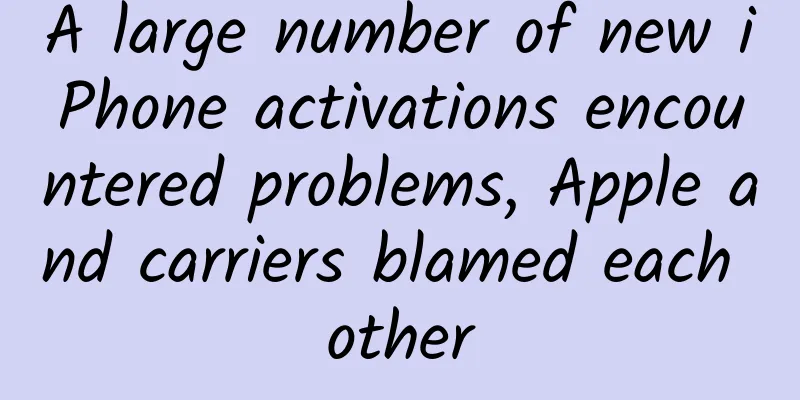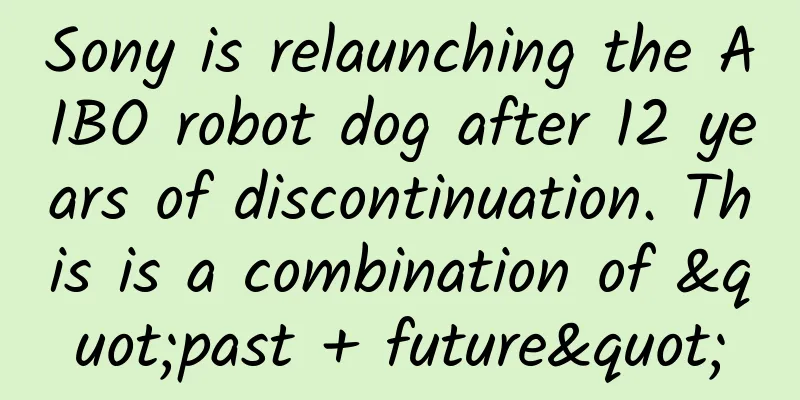How amazing has Android changed over the years? A reminder of old players' memories

|
The new generation of Android system will soon be officially released. Currently, the beta version of Android Q, the predecessor of Android 10, has been pushed to Pixel devices. What kind of dessert will the "Q" in Android Q be? This has become a hot topic. In total, the Android digital version has reached "10", and the tradition of using desserts as system codes has been passed down for 14 generations. From "Cupcake" to the unnamed "Q", the 14 desserts have witnessed the growth of Android and also carried the memories of countless old players. From an iOS follower at the beginning to the main force of mobile Internet today, the changes of Android in the past decade are amazing. On the eve of the release of Android 10, let's review the evolution of Android and talk about those memories that only old Android players can understand. Do you remember the old Android interface? The lack of design and shoddy workmanship of the early Android system interface are obvious to all, which is closely related to the history of Android. If you trace back to its origins, the history of Android is even longer than that of iOS. In October 2003, Andy Rubin, known as the "Father of Android", founded Android Technology Company, which is committed to developing smarter mobile devices for users. In 2005, Google acquired Android, and Rubin became the leader of the Linux kernel mobile operating system team - this Linux kernel mobile operating system is Android. From this history, Android is older than iOS. However, when Android was introduced to the consumer market by Google, it was an undoubted follower of iOS. In 2007, the iPhone and iOS came out, and the full touch screen design concept shocked the entire industry. Before iOS was released, Android was designed based on keyboard hardware. After iOS was released, Android was affected and made drastic changes, changing the system to touch screen. In the early Android system, some functions still required a keyboard to be implemented. The first Android phone launched to the market, HTG G1, still had a side-sliding full keyboard, which is a clear proof of this. Under such circumstances, it is only natural that the Android interface lacks design. If you are an old Android player, I believe you will still remember the dilemma of the lack of details in every corner of Android in the early years. For example, the interface transition lacks animation, the menu sliding lacks damping, and even the pinch-to-zoom will drift, not to mention the various shapes of icons and uneven frame layouts. During the entire Android 1.X/2.X era, the Android interface design was not systematic. In order to make up for this, many third-party ROMs appeared on the market that redesigned the entire system interface. The familiar MIUI was also born in this era. I'm afraid many new Android users have never seen these interface elements of Android 2.X. By the time of Android 3.X/4.X, Google finally had enough money to organize the system interface. Google poached Matias Duarte, the designer of WebOS, to redesign a UI for Android, and the Holo interface was born. Holo's design concept is inherited from WebOS, and a large number of interactions use the concept of WebOS. WebOS card-style multitasking, pulling the notification to call out the notification center and other designs have a high appearance rate in Holo design and even in subsequent Android interfaces. Palm OS UI Compared with Plam OS, Android Holo interface has a lot of inheritance. Although the Holo interface is not gorgeous, it is very tasteful and even looks more modern than the skeuomorphic design of iOS at the time. Holo design emphasizes large content blocks (such as cards) and simple, orderly layouts. Many classic elements on Android are still inherited from Holo, such as the hamburger menu and the animation of sliding the interface to the bottom. Most importantly, Holo design brings standardization, which makes many Android apps no longer simply transplanted from iOS applications, but developed according to Android design specifications. Android finally has its own visual style. The black-and-blue Holo UI is cool and technological, but still looks a bit raw and cold. However, the Holo design also has many shortcomings, such as low content density and not so smooth operation. After Android 5.0, Google launched Material Design with more complete visual design and interaction logic, and Holo was replaced. Material Design, which was introduced after Android 5.0, uses paper-cut-like shadows to create layers, making the visual effect more elegant. In Android 5.0, Material Design generally inherits the interactive concept of Holo, but the visual style is completely different. Material Design uses paper-cut mimicry to create UI layers and adds a lot of dynamic effects, making the interactive logic of the system clear and the interactive process more vivid. Material Design is of great significance to Google. It means that Google finally has a mature interface design language (Holo is still a bit awkward). At the same time, this design language is not only used for Android, but also later extended to Chrome and the pages of various Google services. A set of UI designed by Material Design. Since then, Android has a UI design that can compete with iOS. Material Design has not remained unchanged. After Android 5.0, the visual effect of Material Design has become more rounded, and the layout has gradually become closer to iOS, with the appearance of elements such as bottom function buttons. Compared with the past, the interface design of Android has changed dramatically, but the majority of users still find it difficult to enjoy Google's native design, and most of them are directly exposed to interfaces customized by third-party manufacturers. However, domestic users are most familiar with various customized UIs, and rarely have the opportunity to access the Android native interface. Are you still familiar with Android's previous operations? How to use an Android phone? The answers given by Android users ten years ago and today may be completely different. The reason is simple. The operation mode of Android has undergone tremendous changes in the past ten years, from the earliest full keyboard and mechanical keys to four or three large capacitive keys, screen virtual keys, to full-screen gestures. The usage of Android has been changing all the time. As mentioned earlier, Android was originally designed to fit full keyboard phones, but was changed to a touch screen system due to the influence of the iPhone. On the HTC G1, you can see a design where a touch screen and a physical keyboard coexist. In the earliest Android, the system did not even have a virtual keyboard, and text input required a physical full keyboard. The earliest prototype of Android was a candy-bar phone with a full keyboard. It was changed to a touch-screen phone due to the influence of the iPhone, but it still retained the full keyboard. In the Android 1.5 era, full keyboards gradually said goodbye to everyone, but mechanical keys are still indispensable. For example, the HTC Hero with Android 1.5 and the Nexus One with Android 2.1 both retained the trackball, but it can also be seen that Android's operation buttons are constantly being simplified. The physical key for answering calls disappeared, replaced by the "Four Great King Kongs" of "Search, Back, Menu, Home". In the HTC MileStone running Android 2.2, both the Four King Kong capacitive keys and mechanical keys appeared, and the full keyboard was still retained. However, this seemed to be the last hit model to retain mechanical physical keys, and Android entered the era of capacitive keys. Later, the number of buttons on Android was further reduced. Starting with the Nexus S, which was equipped with Android 2.3, the search button disappeared, leaving only the three major buttons: Back, Home, and Menu. However, in terms of form, each Android manufacturer has different solutions. For example, the Galaxy S, which is also equipped with Android 2.3, has a home button designed as a mechanical button in the center. This design is still very common in subsequent Android phones. Compared with capacitive keys and even the later on-screen virtual keys, this design can be better combined with fingerprint unlocking, so it has remained popular for a long time. The four major kings and three major kings have different shapes. Capacitive keys have gradually become the mainstream, and the menu key has been slowly replaced by the multitasking key. In Android 3.X, the design of virtual buttons on the screen first appeared. However, Android 3.X was created for tablets and was not installed in mobile phones. Android tablets have always been tepid, so people have not had a deep impression of it. In Android 4.X, the design of virtual buttons on the screen has been fully launched. Galaxy Nexus took the lead and cancelled the capacitive keys outside the screen, integrating all the operation buttons into the small black bar at the bottom of the display. Not only that, the function of the buttons has also changed. The menu button has been replaced by a multitasking button, and the menu button only appears in certain apps. So far, the way Android operates has changed dramatically again. The design of the virtual buttons on the Android screen is undoubtedly controversial. Its advantages are: first, it is flexible and changeable. Manufacturers can adjust the position and even the number of buttons according to needs; second, it is not easy to touch by mistake. The buttons will be hidden when the video or game is in full screen, while the capacitive keys outside the screen cannot do this; third, it increases the screen-to-body ratio. There is no need to reserve space for buttons on the chin of the phone, and the overall feeling is stronger when the screen is turned off. However, the virtual buttons on the screen also have disadvantages that cannot be ignored, such as squeezing the display content, and fixed display is more likely to cause AMOLED screen burn-in, etc. A picture shows the changes of Android buttons. The virtual buttons on the screen can achieve a larger screen-to-body ratio and more flexible functions. Despite the controversy, in the trend of increasing screen-to-body ratio, the solution of virtual buttons on the screen is still increasingly appearing in the products of various manufacturers. And as the screen-to-body ratio continues to increase and the concept of full screen is introduced, virtual buttons have less and less room to stay. In Android P, Google introduced a gesture bar similar to iOS. By dragging and pressing, or dragging the bar, you can return to the desktop, call out multitasking, and other functions. It has become an optional solution to replace the virtual buttons on the screen. In Android Q, the gesture design is more radical, and the "three major gestures" have all been cancelled. Gestures have officially become the main operating method of Android. In the past decade, the function buttons of the Android system have changed from complex to simple, from full keyboard to gestures, and the operation mode has undergone earth-shaking changes. The era of full screen has arrived, and gestures have become a trend. In the future when VR, AR and other technologies are popularized, what changes will the operation mode of Android have? Let's look forward to it together. 3Have you tried the old ways of playing Android? Have you tried the old ways of playing Android? Let's talk about some old ways of playing Android. Android is one of the most playable mobile operating systems. In order to achieve a better experience, many friends have tried the Android system. However, with the development of Android itself, many ways of playing have become the tears of the times and only remain in the memories of old players. How many of the following ways of playing have you tried? Move APP to SD card In the early days of Android, it was common to use SD cards for storage expansion. Although apps are not installed to SD cards by default, apps can be moved to SD cards through the system's own functions or small tools such as App2SD. For some large apps such as games, moving apps to SD cards is quite significant. You should know that in the early days, a lot of Android phones only had 4G of storage, so SD cards can be said to have taken on the responsibility of saving people from suffering. Previous Androids can move apps to SD cards and use the SD card as usual After moving the APP to the SD card, the SD card can still play its original function. You can remove the SD card and insert it into someone else's phone or computer to transfer data. It is suitable for both USB flash drive and storage space expansion. However, after Android 6.0, this function has come to an end. In Android 6.0, the storage space can still be expanded through the SD card, but it can only be used as portable storage, where only music, photos and other data can be stored; or it can only be used as internal storage, and after formatting, it is divided into a partition with the internal storage space, blending with each other, and data can no longer be taken out and read separately. Now the SD card must be formatted when the app is installed, and the SD card can only be used on this machine Not only that, more and more Android phones have cancelled the SD card slot. To this day, do you still remember how to move apps to the SD card? USB mode Many friends will have doubts when they see this. Hasn't Android always been able to be used as a USB flash drive? Why is the USB flash drive mode said to be the tear of the times? In fact, the fact that Android can now be used as a USB flash drive is completely different from the previous Android USB flash drive mode. If you observe carefully, you should know that if you want to use Android as a USB flash drive now, you have to choose the "MTP mode" instead of the previous "USB mass storage mode" - this is the real USB flash drive mode. What is the difference between the two? In simple terms, the previous Android USB mode would mount the storage space of the Android device directly to the PC system, turning the Android storage space into a disk partition in the PC system, and the operation was no different from a USB flash drive. The current MTP mode does not mount the Android storage space as a PC disk partition, but only transfers data through the MTP protocol. The user experience of these two designs is very different. In Android USB mode, the phone cannot read the files in the device. Now Android no longer uses this solution. First, let's talk about the advantages of the USB mode. Since the storage space is directly mounted as a PC drive, you can browse and modify the files in the Android device on the PC at will, and the transfer speed is also very fast. You can also download software directly to the Android device without downloading it locally and then copying it. However, the problems brought by the USB mode also affect the user experience. When you use Android as a USB drive, the Android system cannot read the files in the device, and once the Android uses a disk format that the PC cannot recognize, such as ext4, the PC cannot read the Android storage space. In comparison, the MTP mode has better compatibility. As long as the PC supports the MTP protocol, it can read data regardless of the disk format used by Android. Although MTP is slow, both PC and Android can operate the files in the machine at the same time, and it is also safer. The PC cannot modify some key data of Android. For example, if the PC is infected with a virus, it is difficult for the virus to damage Android files through MTP. Of course, the inconvenience of MTP is that you cannot modify files directly. You need to copy the files before operating. For users, MTP is obviously less prone to problems. Therefore, it is reasonable that the more powerful USB flash drive mode is eliminated. Manual Trim Android phones use flash memory, so naturally, they may encounter situations where the flash memory becomes "dirty". Simply put, the flash memory needs to be erased before it can be rewritten. When data is deleted in the system, the data is not physically deleted from the flash memory. How can the system intelligently identify "dirty" flash memory and clean it before writing data? The important technology used is Trim. In the beginning, Android did not support Trim, so after using Android for a long time, the flash memory I/O efficiency would be greatly reduced, and lag would occur. However, Linux itself supports the Trim command, so through apps such as Lagfix, you can manually initiate Trim, or set a timed Trim to restore Android to smooth operation. Android once required manual Trim In recent years, operating systems including Windows and macOS have fully supported Trim and are ready to support SSDs. If Android still needs manual Trim, it would be unreasonable. After Android 4.3, this method has become history. Android 4.3 finally added the system Trim function, thanks to which, the fluency of Android has also been improved to a higher level. 4Does the Android lag in the past leave a deep impression on you?Does the Android lag in the past leave a deep impression on you? Speaking of Android's derogatory name, the nickname "Little Prince of Lag" is unavoidable. If you are an old Android player, you will definitely be impressed by the Android lag in the early years. At that time, one of the main reasons why people chose iOS or even WP was that they were fed up with the bad experience of Android's three-frame freeze and five-frame freeze. Now, although Android is absolutely smooth, at least fewer and fewer people regard Android lag as an unacceptable obstacle to use; coupled with the fact that iOS has also turned over in terms of smoothness, there is even less reason to complain about Android lag. Android's efforts to improve smoothness are obvious to all. The biggest factor affecting the fluency of Android is the background scheduling mechanism. The background mechanism of Android is the same as that of Linux. Returning to the system desktop does not close the corresponding process of the APP, but allows the APP to continue running in the background; when the system needs more resources, the process in the corresponding state will be asked to leave. However, many APPs use various means to stay in the background, and the system itself cannot clear out the processes of rogue APPs. As system resources become increasingly tight, it is natural that the system will freeze. Android divides APP processes into different types and automatically manages whether they stay in the background. However, APPs are not so disciplined. Android has put a lot of thought into solving the problem of apps randomly staying in the background. In Android 5.X, Google launched Project Volta, and the system added a new API JobScheduler and introduced an aligned wake-up mechanism. If the background of the app wants to take any action, it can no longer wake up intensively, but wake up all at once in a certain period of time, which reduces the probability of lag. In Android 6.X, the Doze mechanism is further introduced. When the system detects that the phone has been stationary for a long time, the system will put the background process into sleep and rarely wake it up, so that the background process will no longer waste the phone's power. In Android 7.X, the process scheduling of the Android system is more based on smoothness. The system will limit the resources that can be called by the background to keep the foreground tasks smooth. In Android 8.X, its development specifications (API level 26 and above) require that once an APP enters the background, it must stop all background services within a short period of time, and new background services cannot be started at will. In Android 9.0, the system directly prohibits APPs from calling third-party APIs, and is not compatible with API level 17. In the past, APPs could use third-party or old APIs to bypass the restrictions of the Android system. In the latest version of Android, the problem has been effectively solved. Android 8.0 restricts APP background services Another factor that causes Android to freeze is the UI rendering mechanism. In Android 2.X, Android did not widely use GPU to accelerate UI rendering. It was not until Android 3.X Honeycomb that a system-level GPU hardware acceleration mechanism was added. In subsequent Android systems, hardware acceleration can be forced to be enabled in developer mode, forcing the system to use the GPU to render the APP interface. After enabling it, many apps that were previously freezing become as smooth as silk. Android 4.1 introduced Project Butter, which increased the UI frame rate to 60 frames through Vsync and buffer mechanisms, while controlling the rendering time of each frame to about 0.0167ms. In this way, Android's UI becomes extremely smooth, laying a good foundation for catching up with iOS in terms of fluency. In addition, Android has also improved the efficiency of code operation. We know that a large number of Android modules and apps are written in JAVA. Before Android 4.4, the code needed to be compiled by Dalvik at runtime, which would consume a lot of resources. Later, Android introduced the ART mechanism, which pre-compiled the APP when it was installed, making it more efficient at runtime. Not only that, ART also brought an improved GC garbage collector, which immediately improved the fluency. In Android 5.0, the Dalvik virtual machine was completely abandoned, ART was fully popularized, and the fluency of Android APPs was taken to a new level. After Android 7.0, a hybrid compilation mode was introduced to ensure the efficiency of JAVA operation while greatly improving the speed of installing APPs. After the introduction of ART, the efficiency of running JAVA on Android has greatly increased In addition, in order to improve the efficiency of graphics rendering, Android 7.0 also introduced the Vulkan graphics interface, which can better call multi-threading and communicate with hardware more directly. Many games have greatly improved the frame rate. For example, the Vulkan version of the familiar "Honor of Kings" is smoother than the OpenGL ES version. With all these measures and the improvement of hardware (the bandwidth of the current low-end SoC Snapdragon 670 and 710 has reached 14.9GB/s, while the bandwidth of the previously common MT6753 was only 5.3GB/s), the smoothness of the Android system is no longer a big problem. Nowadays, Android rarely has the early stuck, pseudo-death, slide-like frame drops, and even stuck restarts. The title of "Prince of Stuttering" is increasingly becoming a unique memory for old Android players. Summarize After more than a decade of great momentum, Android is no longer what it used to be. Android Q has already been released as a beta version to the public, and the official version of Android 10 will be released this year. The 15th Android dessert code is about to be released. Looking forward to the latest Android Q/Android 10, do you still remember the taste of Gingerbread, Ice Cream Sandwich, and Jelly Bean? If you still have some memories about Android, please share them with everyone in the comments section! |
<<: After this fall, iTunes may no longer exist.
>>: 5 Kotlin features Android developers need to know
Recommend
Low-temperature burns may cause cancer! How to use portable heating equipment safely?
The first cold wave of the year is coming! Recent...
Robots could destroy our jobs, our economy, and our world
At the American Association for the Advancement of...
Turn your marketing campaign into a profitable business
Any large-scale marketing campaign will inevitabl...
Yang Yigang's zero-based money-making videos become cash courses
Do you also want to experience the feeling of hav...
The "lone hero" in the desert - the brown-tailed hawk: Not only is my name crazy, I am really crazy!
The picture shows a brown-tailed hawk photographe...
Mobile e-sports has become a blue ocean, and the future market size is expected to exceed 50 billion
With the growth of smartphone users, the number o...
Apple iOS 15 officially released: new notification interface and FaceTime, big improvements to weather, photos, and wallet
June 8 news: Early this morning, Apple held the W...
If my WeChat account is blocked, who will protect my “right not to be forgotten”?
In the Internet age, many of people's behavio...
Startup products: How to scale up offline?
Recently, I have been learning how startups can s...
5 techniques for attracting traffic from new media public accounts!
Nowadays, many people are saying that "the b...
Understand these three reasons that slow down mobile applications before solving the problem
【51CTO.com Quick Translation】Generally speaking, ...
Apple conference: doubts about the concept of affordable luxury led to a drop in stock prices
After four years, Apple finally launched a new ca...
Xi'an high-end men's club, unexpected romantic experience
Xi'an Bath Club East Suburbs, South Suburbs, ...
Producing 400 liters of milk a day? Why don’t we drink whale milk?
Note: The cover image is from Xinhua News Agency...


![[Creative Cultivation Program] Cows burp, climate warming, this is no joke](/upload/images/67f26306815b8.webp)






